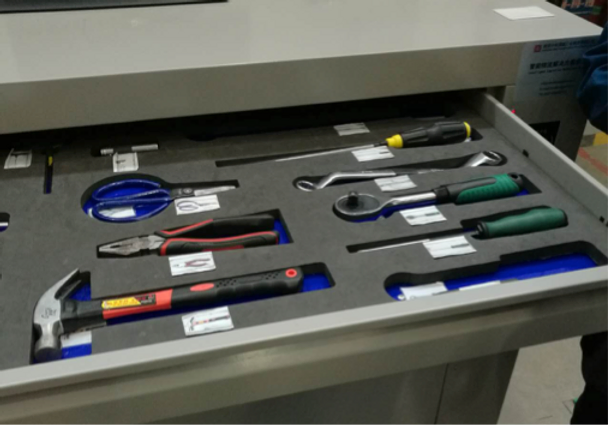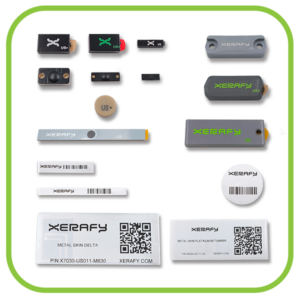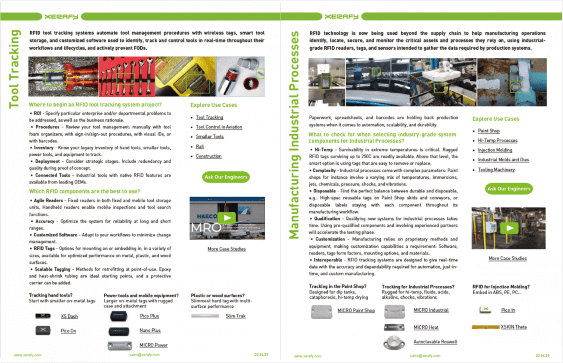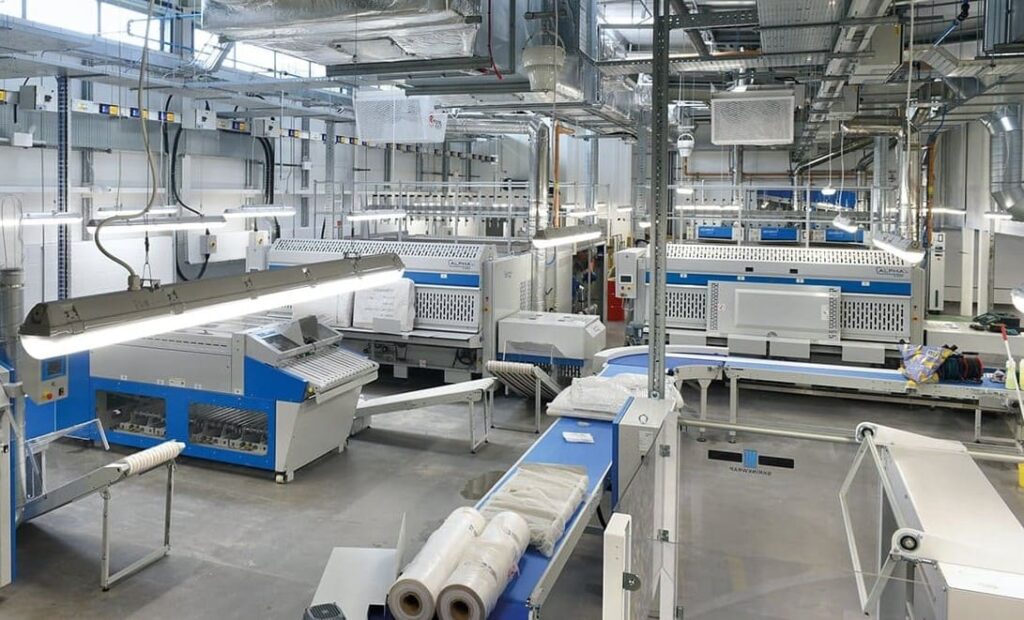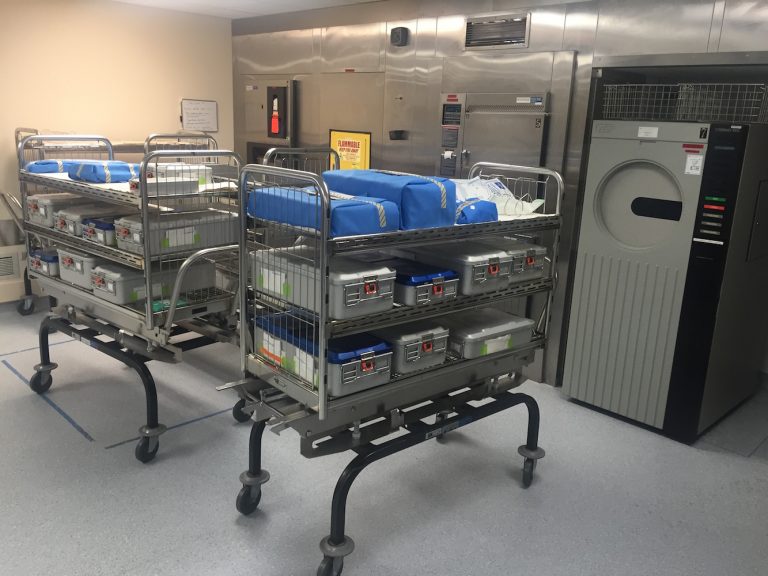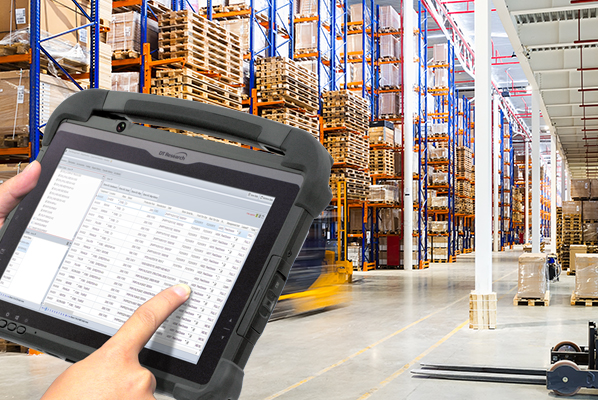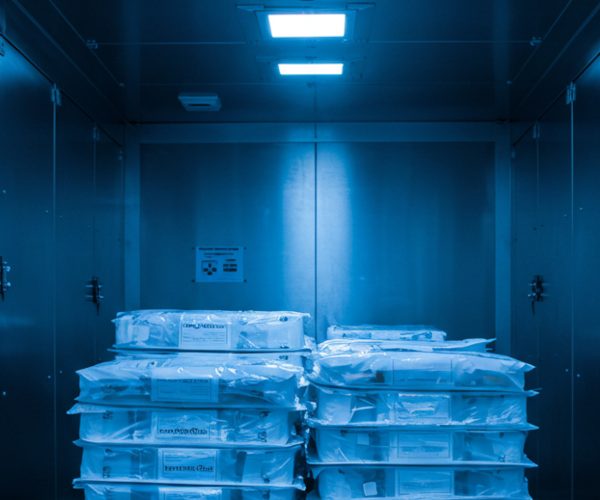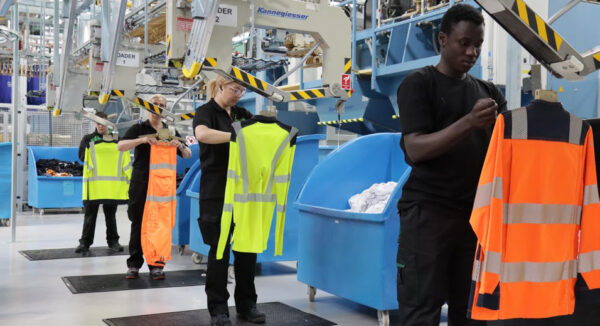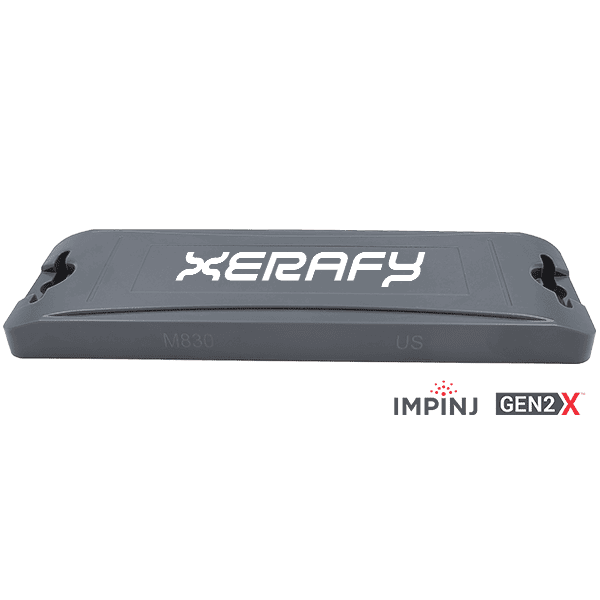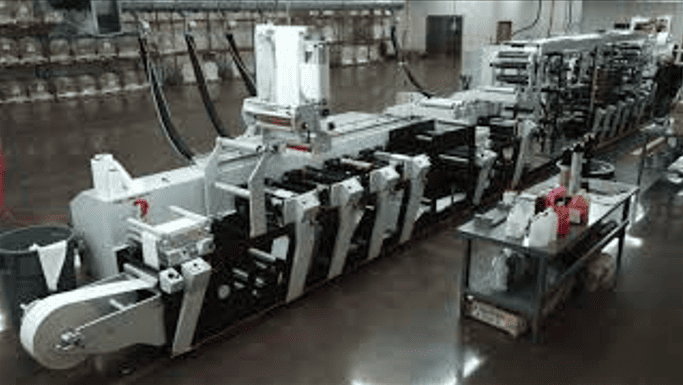The prevention of FOD in aviation, such as lost or misplaced tools, is an age-old challenge in the aircraft maintenance industry.
How to prevent FOD in Aviation?
A FOD program will help minimize the threat of FOD to aircraft and equipment.
It is a time-consuming but necessary investment for an organization and its engineers:
Record-keeping and paperwork
Human errors and lost records
Lack of real-time visibility
Low-efficiency single item identification and tracking
The 5 key characteristics of a good FOD program are:
- A clear organization on the shop floor with a uniform benchmark for tools to help eliminate heterogenous technician-owned tool boxes, in favor of a consistent issue of company tools. The FOD program will also consider the processes needed to track and monitor all tools accurately, before and after a job is completed or a new shift has started.
- Visibility is another key success factor of FOD programs, with initiatives driving awareness among the team while promoting a productive work environment.
- Access control measures provide the foundation for tool accountability, with kits, toolboxes, cribs, cabinets, and drawers, defined and managed with tool control in mind.
- Considering all aspects of asset management throughout a tool lifecycle from procurement to inspection, calibration, and replacement.
- Tool control processes that are repeatable, complied with by all engineers, and auditable. And where there are failings, automation should be able to provide the required safety nets.
What is Tool Control?
Tool control in aviation is about ensuring the elimination of aircraft accidents and incidents that are caused by improper accountability of tools.
It relies on preventive measures and rigorous safety and security checks performed in and around an aircraft by airlines and MRO operators. All major countries recognize this risk to safety and have tool control regulations in place, with non-compliance representing a serious breach.
Tool control procedures help creates a culture of tool accountability. Together, they are the key to aviation becoming one of the safest and most secure modes of transportation by eliminating:
Tools being misplaced, broken, or lost.
Tools that are not properly calibrated.
Foreign Object Debris, such as tools left inside an airplane after repair.
Other advantages of tool control in aviation maintenance include:
Less downtime spent searching for missing or misplaced tools.
Reduced errors due to faulty or uncalibrated tools.
Reputation protection, for instance, by avoiding a maintenance job having to be checked again due to inadequate tools being used.
Tool control procedures are focused on ensuring that all tools used on a job can be accounted for at the end of a shift. With each tool given a specified storage area, it is easier to quickly detect what is lost or missing.
FOD Check Systems
How do you keep FOD in aviation under control? Tool accountability methods range from positive tool control to marking systems and electronic tagging.
Visual tool identification, such as tool foam organizers for toolboxes and drawers, has traditionally been used in aviation tool control procedures. Tool crib management and sign-in/sign-out procedures add another level of control, but with limited efficacy and accuracy and a significant negative impact on productivity.
Shadow Tool Boards
Shadow tool boards feature tool cutouts in bright colors that make missing tools simple to notice, with the engineer leaving their tool tags or t-cards on the hooks under each tool.
The tool boards offer a basic but effective tool control process for small organizations with limited tool inventories that are managed centrally.
Foam Tool Inserts
Foam trays are one of the preferred choices of aviation maintenance companies. Foam is custom cut and shaped for each toolkit, providing inserts that fit into tool drawers, cribs, and other tool storage units. Dual-layer foam can be used, providing a color background to each cutout, to quickly identify what is missing.
Foam inserts offer a cost-effective way of securing tools and equipment inside mobile storage units, with a simple (if imperfect) positive tool control procedure for visual inspection and identification.
Barcodes and Optical Markings
Barcodes and QR codes have taken over from earlier laser marking of tools, representing the first attempt to provide tool identification at item level and at scale: Across large tool inventories, multiple kits, and teams organized in shifts, for interventions in complex operations.
These strategies are a good starting point for aviation maintenance organizations looking to improve their tool control, by ensuring that their full tool legacy is inventoried, keeping only the tools needed for the work environment, with any extra tools completely removed.
Those tool accountability strategies have provided the foundation for next-generation tool accountability systems that build and learn from barcodes and optical markings limitations in the field:
Easily damaged
Easily rendered unreadable in the presence of dirt, fluids, impact
The identification process remains manual and slow
No tracking capabilities are available
FOD Check with RFID
RFID tool control adoption has garnered significant momentum thanks to the availability of battery-free tags that are small enough to be mounted onto even the smallest tools or embedded in them for extra ruggedness.
Moreover, the wide availability of RFID equipment such as fixed and handheld readers allows for the cost-effective deployment of scanners that can perform tool control automatically to identify wirelessly, from a distance, in all directions, and in bulk. Unattended readers can issue alerts if tagged equipment is removed from authorized areas or left unattended and can be used for automated check-in-check-out procedures.
Key Features
This in turn enables a number of features that are essential to tool accountability:
Fast and accurate identification, even when tracking metal tools and other items that challenge traditional wireless technologies.
Tool tags can be unobtrusively attached or embedded into tools and equipment.
Area scanning for missing tools can be performed manually or automatically.
RFID tool control offers a number of benefits over optical identification techniques such as Barcodes, QR codes, or laser markings:
Tools can be scanned and identified in any position when a barcode must be exactly positioned to be read.
Tools can be scanned covered or inside a container when a barcode requires a clean surface and direct line-of-sight.
Tools can be scanned in bulk, and automatically when a barcode is read one at a time only, manually.
Most tools can be RFID tagged, with reliable and scalable methods available for legacy tool inventories, with a combination of epoxy and heat-shrink tubing being favored by the industry for adequate protection against shocks, fluids, etc.
Connected Tools
RFID tagging solutions are available for the retrofitting of legacy tools inventory.
Solutions exist for the smallest tools such as sockets.
Manufacturers are bringing to market IoT-ready tools, that come with ‘connected’ features.

RFID-Enabled Socket Tool from Facom
MRO Software For Automated Tool Control
Automated Tool Control systems are designed to reduce the risks of FOD in aviation, the costs of tool shrinkage and operational downtime, while promoting a culture of tool accountability in MRO operations. Where possible, the trend is to take advantage of existing technology infrastructure while offering bespoke solutions that minimize change management.
A number of tool crib software and solutions are available such as: Cribmaster Storeroom and Tool Crib Management, SnapOn Level5, Onvisio Connected Tool Crib, Nexess Smart Cabinet.
These systems vary in scope and components, but they are usually built on optical or electronic tracking technologies such as RFID, and architectured around essential MRO tool inventory software features and storage capabilities.
Key Features
Full tool inventory completed in seconds.
Alert for when a tool is missing.
Where a tool is, based on the last location read.
Tool movement monitoring within the facility, using strategically placed scanners.
Active tool search for sweeping the shop floor.
Full audit trail.
Electronic tracking throughout every workflow.
Monitoring of calibration dates.
Reports for reordering broken tools.
Simplifying daily and repetitive tasks without compromising on FOD prevention.
Integration and interoperability with MRO software as well as enterprise systems.
Customization.
MRO Software For Tool Storage Units
Mobile units, such as RFID-enabled tool cribs, trolleys, and carts, as well as tool boxes and bags, with tool crib software on board.
Centralized tool rooms and RFID cabinets equipped with portals or kiosks for automated check-in-check-out.
Additional equipment is readily available off the shelf (e.g. RFID handheld scanners, antennas, or portals) to offer bespoke solutions in area coverage, choke points, workflows, etc.

Xerafy is a pioneer in RFID for Tool Control, bringing to market several innovations that enable advanced identification and automation capabilities.
In addition to a complete range of field-proven RFID tags available off-the-shelf, Xerafy offers Custom RFID Tags services, covering everything from a personalization service bureau to custom-design engineering capabilities.
